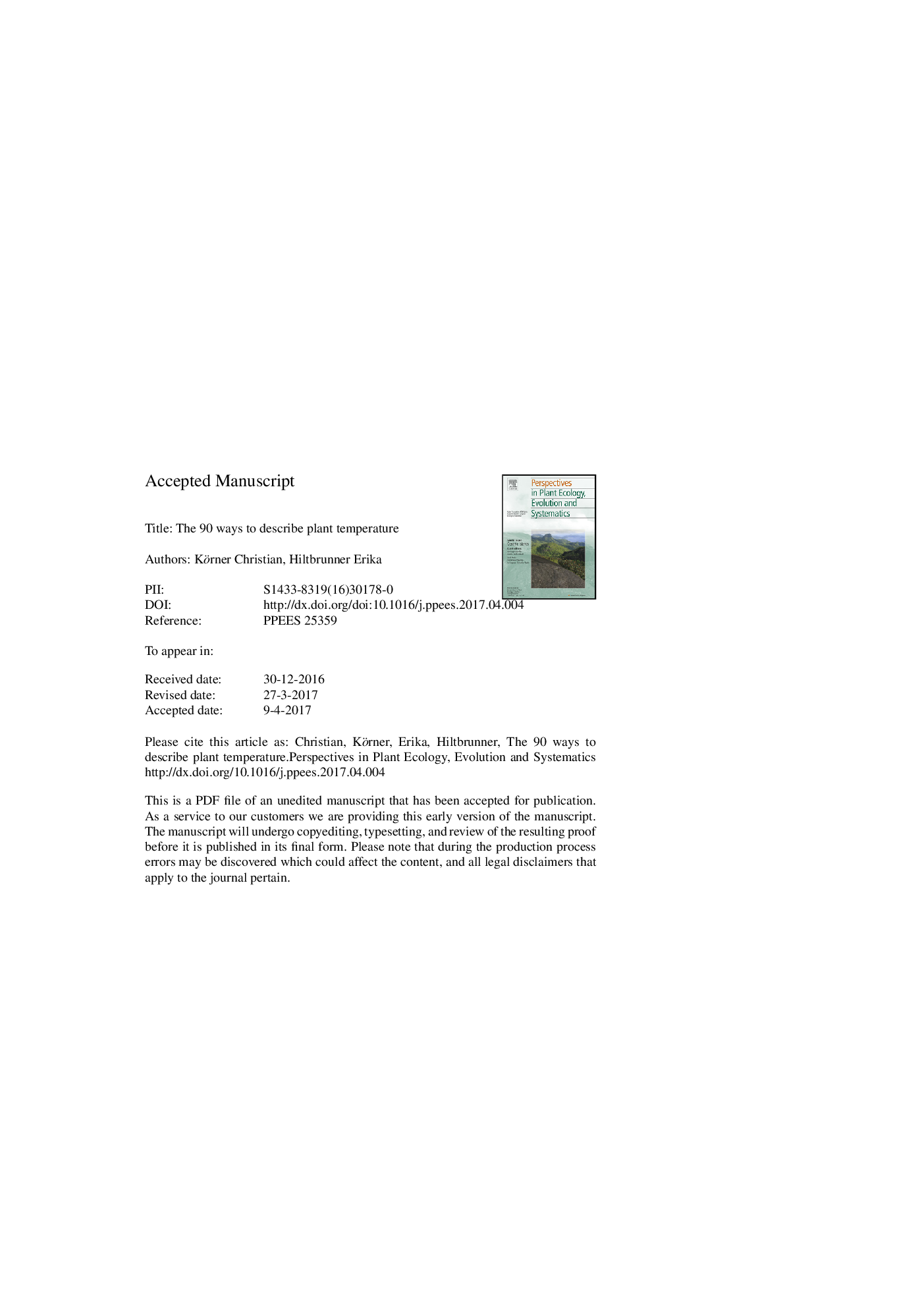| Article ID | Journal | Published Year | Pages | File Type |
|---|---|---|---|---|
| 8849516 | Perspectives in Plant Ecology, Evolution and Systematics | 2018 | 28 Pages |
Abstract
What seems like a trivial task is one of the most difficult ones in functional plant ecology and biogeography: selecting the appropriate measures of temperature for an ecologically meaningful description of habitat conditions and for a mechanistic understanding of responses of plants. The difficulty becomes even more severe at elevations above the climatic tree limit, where plant stature, topography and seasonal snow cover interact in producing temperature conditions that largely deviate from weather station records. Temporal resolution and the distinction between extremes and means for biogeographic applications are emphasized. We summarize the key issues in handling temperature as a driver of plant life in general and in high elevation ecosystems in particular. Future directions in plant-temperature research at high elevation need to resolve the thermal species range limit issues (identify the fundamental temperature niche) and the complex controls of plant development (phenology) in a topography context.
Related Topics
Life Sciences
Agricultural and Biological Sciences
Ecology, Evolution, Behavior and Systematics
Authors
Christian Körner, Erika Hiltbrunner,
